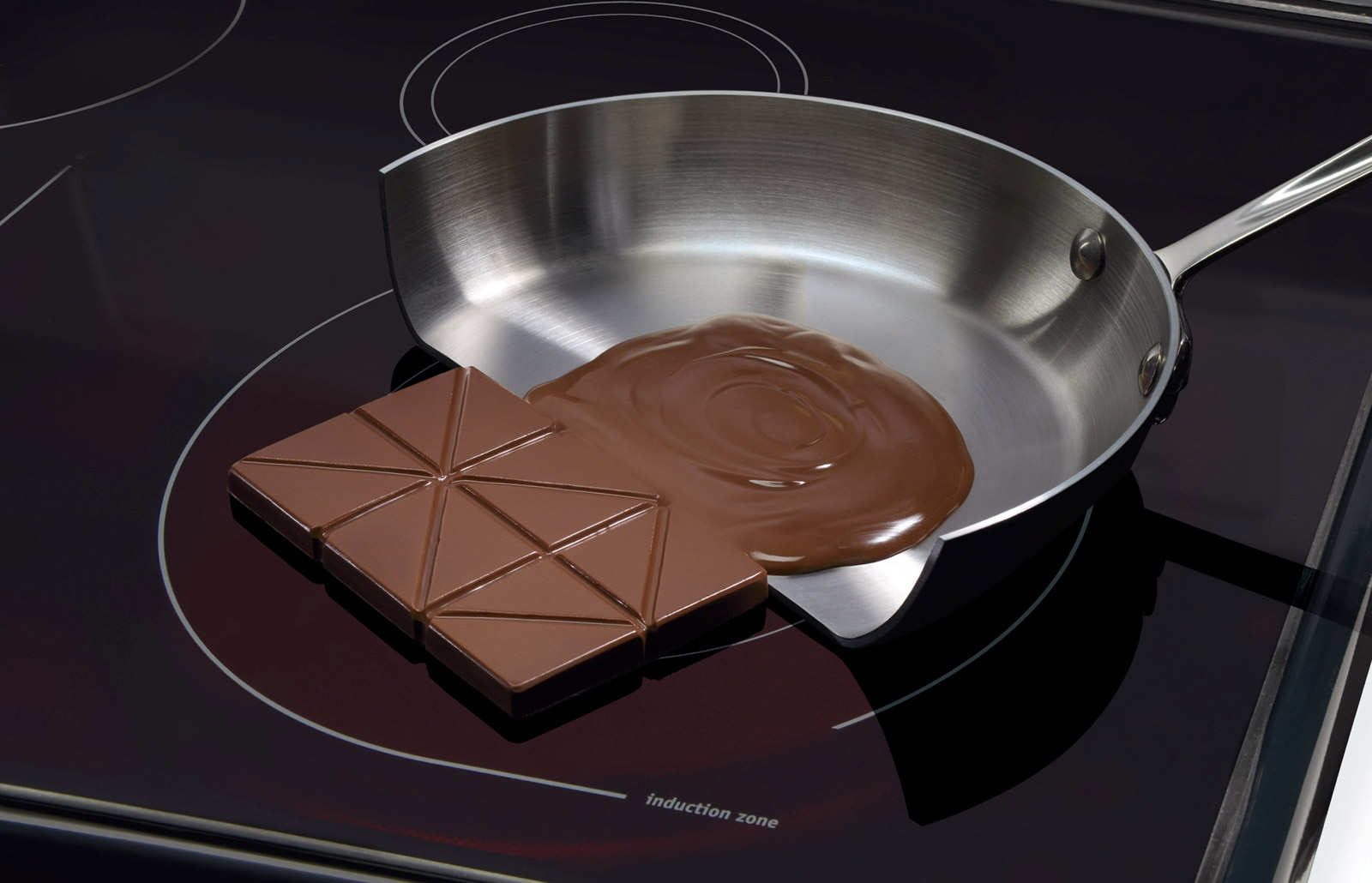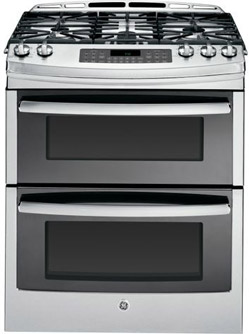When you’re a residential architect, kitchen appliances are a big deal. In fact, it’s not unusual for our clients to be more concerned with the kitchen appliances than any other specific item within the home. And of all the appliances, cooking is, well, on the front burner. Homeowners typically have strong preferences about their cooking methods and selecting the right appliance for the job is an exercise in research, expertise, experience, and filtering down the overwhelming choices out there. Over the years we’ve found that the best results are achieved through a long-standing relationship with a trusted supplier; this has allowed our projects to incorporate appliances that are highly functional, cost-effective, and aesthetically appropriate to the design of the home. When our favorite appliance rep agreed to be a guest blogger on the topic of cooking, we were thrilled. Please give a scorching-hot welcome to Aaron Freedman of Metropolitan Appliance here in Seattle.
My favorite product category to discuss with builders and homeowners that visit our showroom is cooking. It’s tough to get really excited about air conditioners or trash compactors — but cooking is fun. Store visitors are so much more interested in cooking, and both the quality and quantity of options have increased. While clients have a better chance to get exactly what they want, I regularly see that this abundance of options comes with a cost: analysis paralysis.

[Image source: xkcd via Chadwick Martin Bailey Research Blog]
A short sidenote: you really need to spend some time offline consulting with an expert in your local marketplace. The web-space is filled with passionate folks who got to that point because they had a bad experience and are eager to share. It is good to know how poor of an experience you could potentially have, but it’s tough to understand the likelihood of having that experience solely from reading web posts. Your local expert will be able to explain the resources that are at their disposal in working through the challenges that you read about online. They’ll also be able to give you more information as to how frequently a manufacturer has had the issues that you’re concerned about and what kind of support that manufacturer provides the expert’s organization to resolve those issues for their customers. In selecting an appliance store to purchase from, you’ll really want to consider how each manufacturer and each appliance store will help you resolve any product issues after installation.
What follows is a handy list of questions and some bonus dialogue to help you describe to your appliance expert what exactly you’re looking to install in your kitchen.
What fuel(s) are available in your home to cook with? Electricity, gas, or both? What fuel would you like to cook with?
You’ve likely had some experience with one or both the fuel types, but perhaps not with the latest technology that employs either of those fuels. Electric induction cook-surfaces blow the doors off of any other type of electric cooking top. They are as responsive as gas, easy to clean, energy efficient, and far safer than any of the other cooking alternatives.

[Electric induction cooktops only heat what’s in the pan – the glass surface stays cool]
Newer gas cooktops can deliver heat faster and simmer down lower than older gas-fueled surfaces. The difference between gas heated and electric heated ovens has narrowed significantly as the engineers for each major manufacturer compete to provide the most consistent oven temperatures throughout the oven cavity regardless of fuel. If you cook a lot of bread and pastry, you’d likely want an electric oven as its drier heat does a better job with baked goods. If you do more roasting and braising in the oven, you’ll really like a gas oven. Because the differences between the two fuels are relatively slim, and most folks cook a little bit of everything, it is likely that you’ll end up satisfied with either. If you know that you are likely to do more of one thing (i.e. roasting) than another (i.e. pizza) you should let that help make the fuel decision. If you aren’t completely certain which fuel you want to cook with, visit a local showroom and see both in action. In homes where a customer wants two ovens, we will often see a built-in (electric) wall oven installed in addition to the gas range (gas top + gas oven).
Are you cooking for survival or cooking for enjoyment?
 If it is the former, barring any impacts on the resale value of your home, you can “get away” with spending far less on a more than adequate range or cooktop/wall oven. Most people that we talk to in the showroom are somewhere in the middle; usually wanting to cook for enjoyment but haven’t really got the time. Features that ten years ago were only available in professional level appliances (i.e. low simmer, high output burners, convection ovens) are now included in much more affordable options. The quality, effectiveness, and durability of those options compared to their professional versions varies. Occasionally, you’ll gain more functionality in considering non-professional options (like the pictured 30” GE PGS950SEFSS Double Oven Gas Convection Slide-in Range). It is worth mentioning that these extra features can potentially expose you to a greater likelihood of requiring service down the road.
If it is the former, barring any impacts on the resale value of your home, you can “get away” with spending far less on a more than adequate range or cooktop/wall oven. Most people that we talk to in the showroom are somewhere in the middle; usually wanting to cook for enjoyment but haven’t really got the time. Features that ten years ago were only available in professional level appliances (i.e. low simmer, high output burners, convection ovens) are now included in much more affordable options. The quality, effectiveness, and durability of those options compared to their professional versions varies. Occasionally, you’ll gain more functionality in considering non-professional options (like the pictured 30” GE PGS950SEFSS Double Oven Gas Convection Slide-in Range). It is worth mentioning that these extra features can potentially expose you to a greater likelihood of requiring service down the road.
In general, most folks are pleased to discover that they don’t need to spend $4,000 to get a spectacular cooking instrument. So what’s the advantage to buying professional appliances (like those made by Wolf, GE Monogram, Viking, etc.)? All (true) professional products offer greater flexibility on the cooking surface (burners that both get very hot and simmer down very low) and larger convection oven capacities. Most professional products are manufactured with higher quality components and their after-the-sale-support, in varying degrees, is higher than non-professional products.
Would you prefer a range (burners + oven in one appliance) or a cooktop/rangetop and separate built-in wall oven?
This is very much a matter of personal preference and is largely a design choice. Some people prefer built-in wall ovens because they can be mounted higher which minimizes the amount of bending over that’s required getting food in and out of the oven. In my experience, most customers are surprised by the costs of built-in wall ovens. You should expect to spend 30% more for a comparable cooktop+wall oven over the price of a range. If you do elect to install a cooktop and wall oven(s), you’ll need to decide if you want a cooktop or rangetop. Cooktops are less powerful and take up less space. Rangetops offer higher performance and give you more cooking surface making it easier to use a greater variety of pots and pans at the same time.
In thinking through the size of the range or cooktop/rangetop: What is the maximum number of guests you’ll want to be able to prepare a meal for?
Your overall kitchen space also plays a major part in determining what is appropriate. You will want to consider how well whatever cooking appliance(s) you select will scale in comparison to the larger overall space. Ranges, rangetops, and cooktops are all approximately the same height and depth, which allows them to line up with standard cabinetry and countertops. While most ranges are 30” wide, many pro ranges and rangetops are available in 30”, 36”, 48” and 60” widths. Cooktops usually are manufactured in 30” and 36” widths.

[Left: Jenn-Air JGC7636BP 36” Gas Cooktop, Right: Wolf SRT366 36” Sealed Burner Rangetop]
How important is it that your cooking appliance selection positively impacts your home’s marketability?
If you’re looking to sell your home in the next couple of years, be sure to think through how much you’re willing to give away to the next homeowner by buying and installing a fancier product than what is commensurate with the average quality in your neighborhood. If you are in the “cooking for survival” camp, you may want to consider installing some of the more upscale brands that offer features you wouldn’t normally benefit from if you know that your home’s potential buyer is likely to be seeing those products installed in comparable neighbouring properties.
How will you be ventilating your cooktop/rangetop?
Know that selecting a non-exterior wall for your range or cooktop installation location comes with some additional planning challenges (mostly related to ducting) and costs (island hoods and downdraft ranges are relatively costly compared to their traditional alternatives). If you know that you aren’t going to want an island hood canopy hanging down in the middle of your kitchen you may not be able to install a professional range or rangetop in that space. If that’s of little concern, there is an ever-growing assortment of alternative ventilation products available for island installs. If you’re interested in a more detailed discussion of the various ventilation products and application, check out Build LLC’s October 8, 2013 blog post, “Design Strategies for Kitchen Hood Venting.”
After you’ve had the opportunity to work through the questions above, prioritize your responses so that you know which of the answers above you feel the strongest about. Armed with answers to the above and a good understanding of what you know you want and what you know you are interested in knowing more about will make your visit into the local appliance shop far more valuable. You’ll end up that much closer to selecting the perfect kitchen appliances for your needs and home.
Aaron Freedman is Vice President and Appliance Sherpa of Metropolitan Appliance in Seattle, Washington. He was born into the appliance industry and studied business at the University of Washington, taking an active role in the family-owned operation in 1998. His responsibilities include business strategy, business evolution, and sales management. When time allows, he enjoys wearing the chef’s hat and firing up the range to cook for his wife and three kids.





